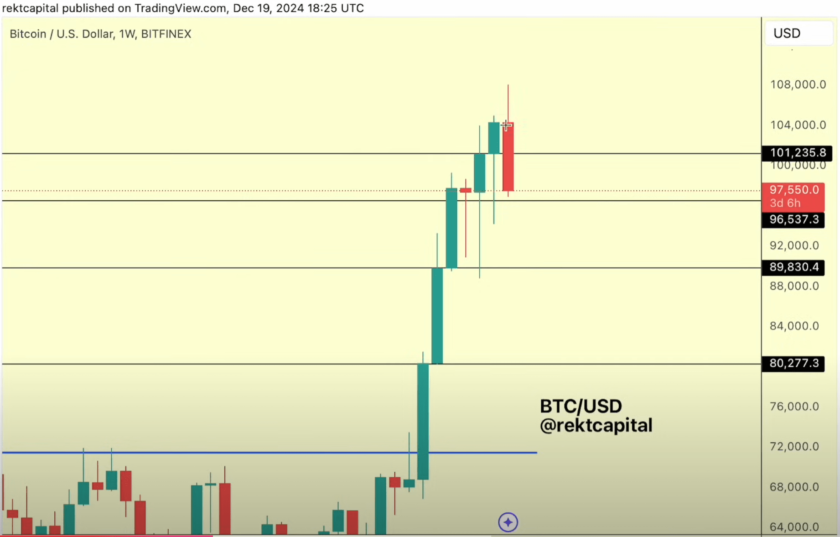Bitcoin in Reaccumulation?
Bitcoin hasn’t been doing too hot as of late. After hitting $13,000 last week, BTC has dipped, as bulls have failed to pick up the pace. Indeed, volumes have begun to drop, sentiment has begun to dip, and Google Trends interest for “Bitcoin” and related terms are on the downtrend.
This has materialized in an approximated 25% drop in the leading cryptocurrency, and upwards of 30% to 40% in altcoins like Ethereum and Litecoin. As of the time of writing this, Bitcoin sits at $9,700, up slightly from the daily bottom of $9,250.
While this dramatic drop has been seen as the “end of a bull market” by some bearish traders, historical trends suggest that Bitcoin needs this retracement. More importantly, this retracement might just be healthy.
As Nunya Bizniz, an up-and-coming industry commentator, points out, Bitcoin’s two previous cycles have seen a near-identical series of phases: rally (bull phase), pop (bear phase), enter a multi-month lull of accumulation, rally off a bottom (expansion), an extended period of reaccumulation, and then the block reward reduction event.
Bitcoin rallying from $3,150 to the local peak of $14,000 was seemingly the expansion phase; what is occurring now is the reaccumulation phase.
This is essential, as there has never been a point in the asset’s history where it established a new low or high one year out from any halving, meaning that a further rally or total collapse from here is somewhat improbable. Thus, in some senses, this pause in the rally is needed and should have been expected.
So, where exactly will this reaccumulation phase bottom out? Around $8,000 seems to be the consensus among analysts, at least in the current downturn.
Per an analysis of the Mayer Multiple (price over 200-day moving average) by CryptoKea, a little-known analyst that accurately called the recent drop to at least $9,700 earlier this month, if you consider the Multiple, the ongoing correction looks much like the first “major correction” of 2017’s bull run.
He notes that if history repeats itself and Bitcoin reverses out of its current short-term bearish trend like it did in 2012 and 2017, it could find support anywhere from $7,148 to $8,700. This corresponds to 1.20 times to 1.46 times of the 200-day moving average, which currently sits at $5,957.
Most likely, however, Kea notes that the “most probable target” as per the use of the Mayer Multiple will be $7,505 — another 20% drop from the current Bitcoin price of $9,600.
Title Image Courtesy of Andre- Francois Mckenzie Via Unsplash




